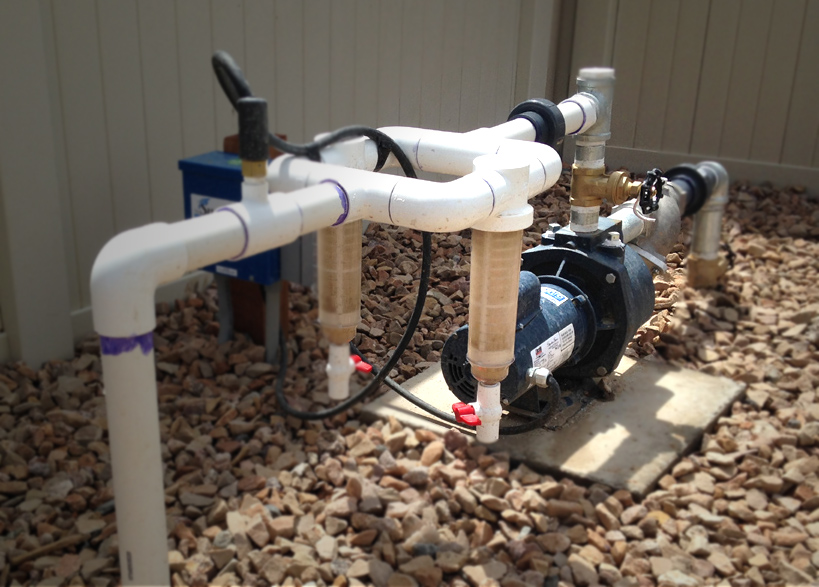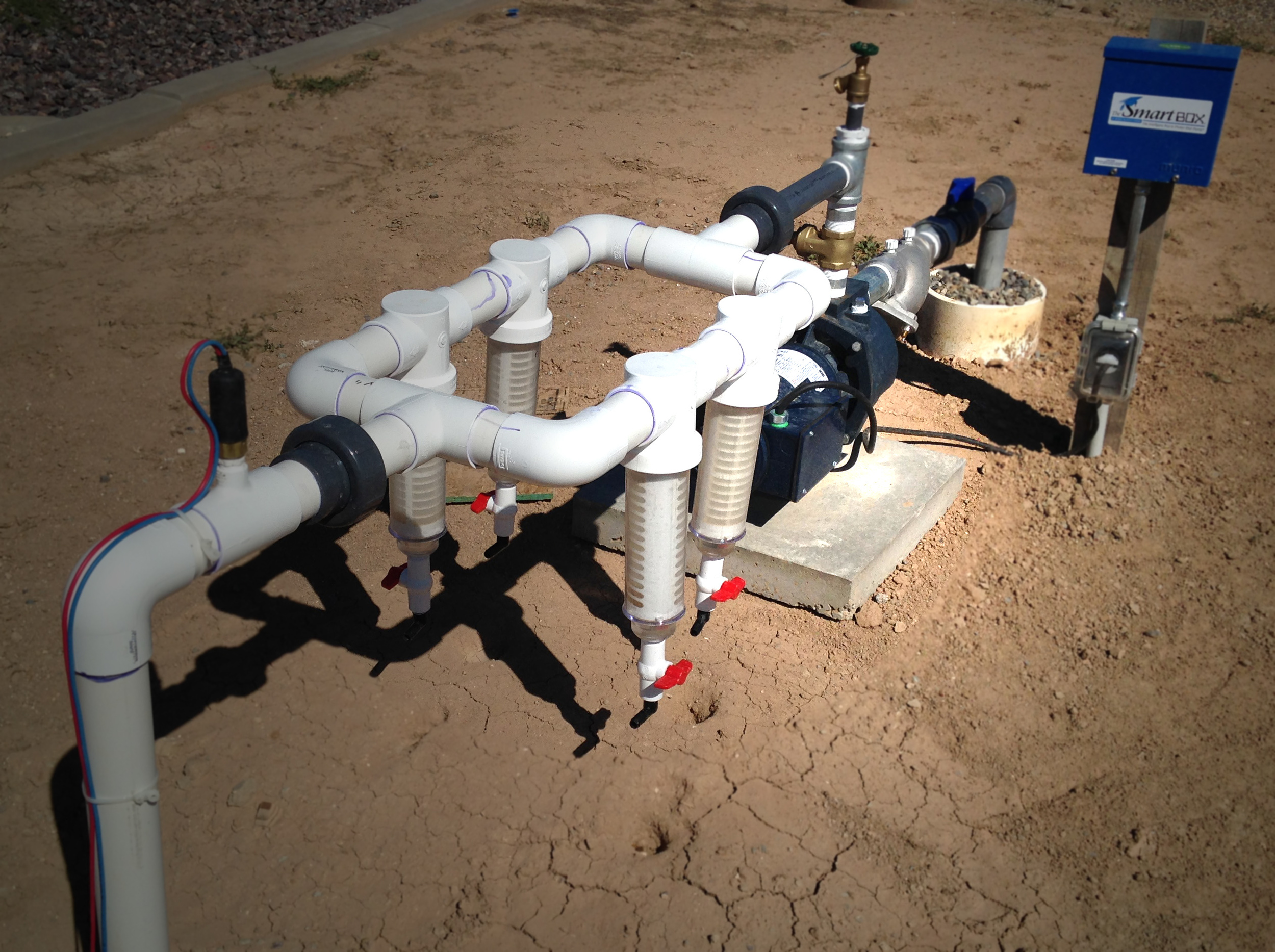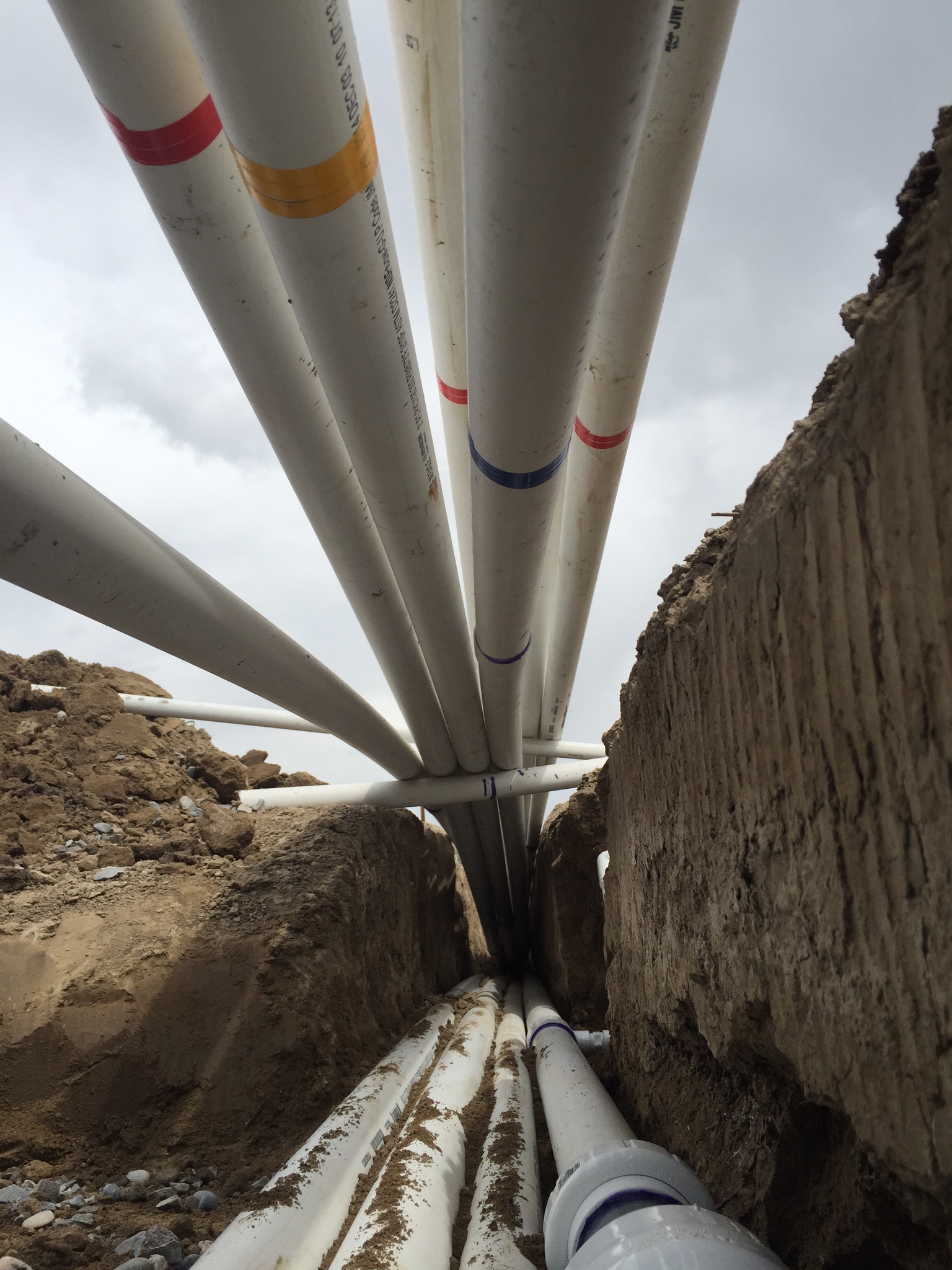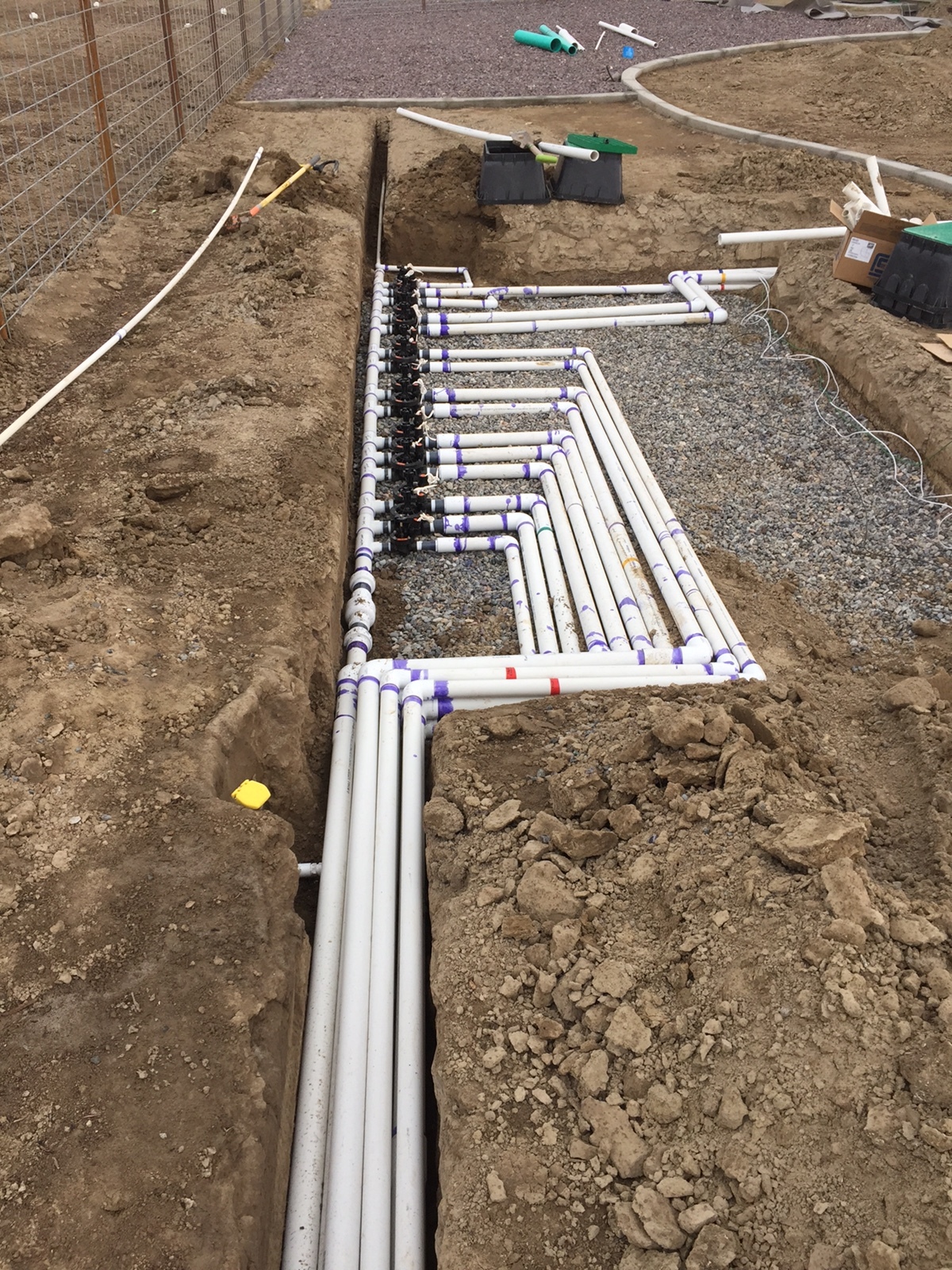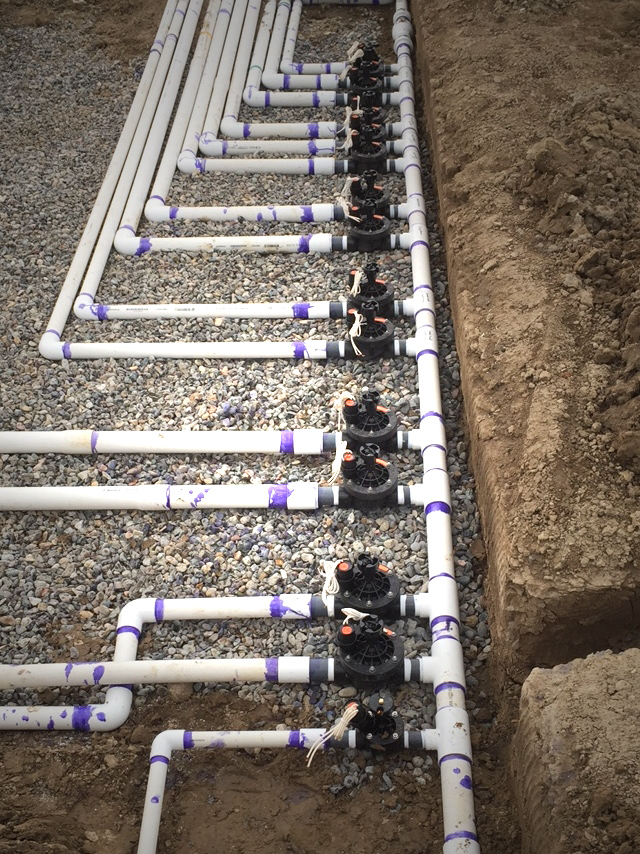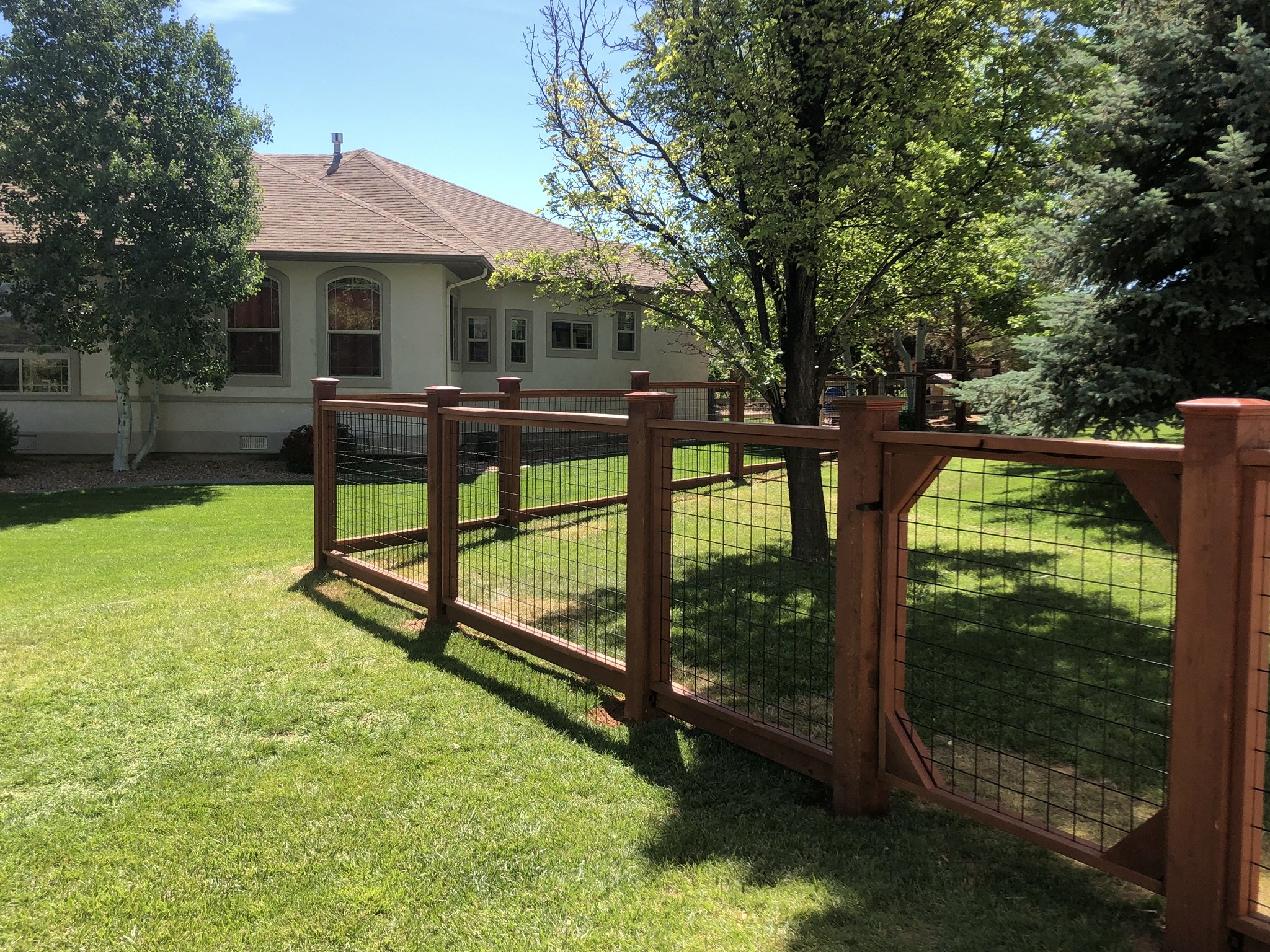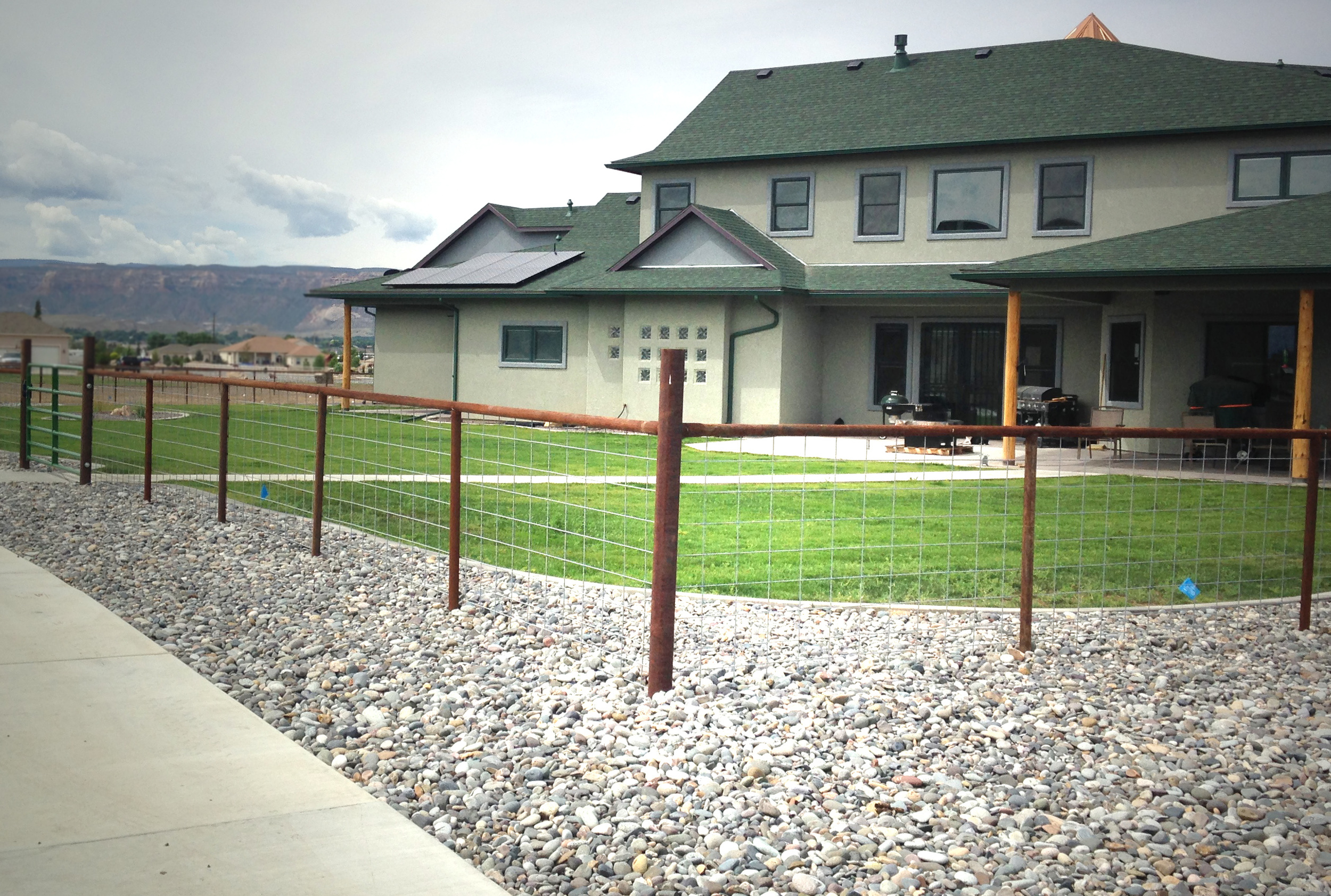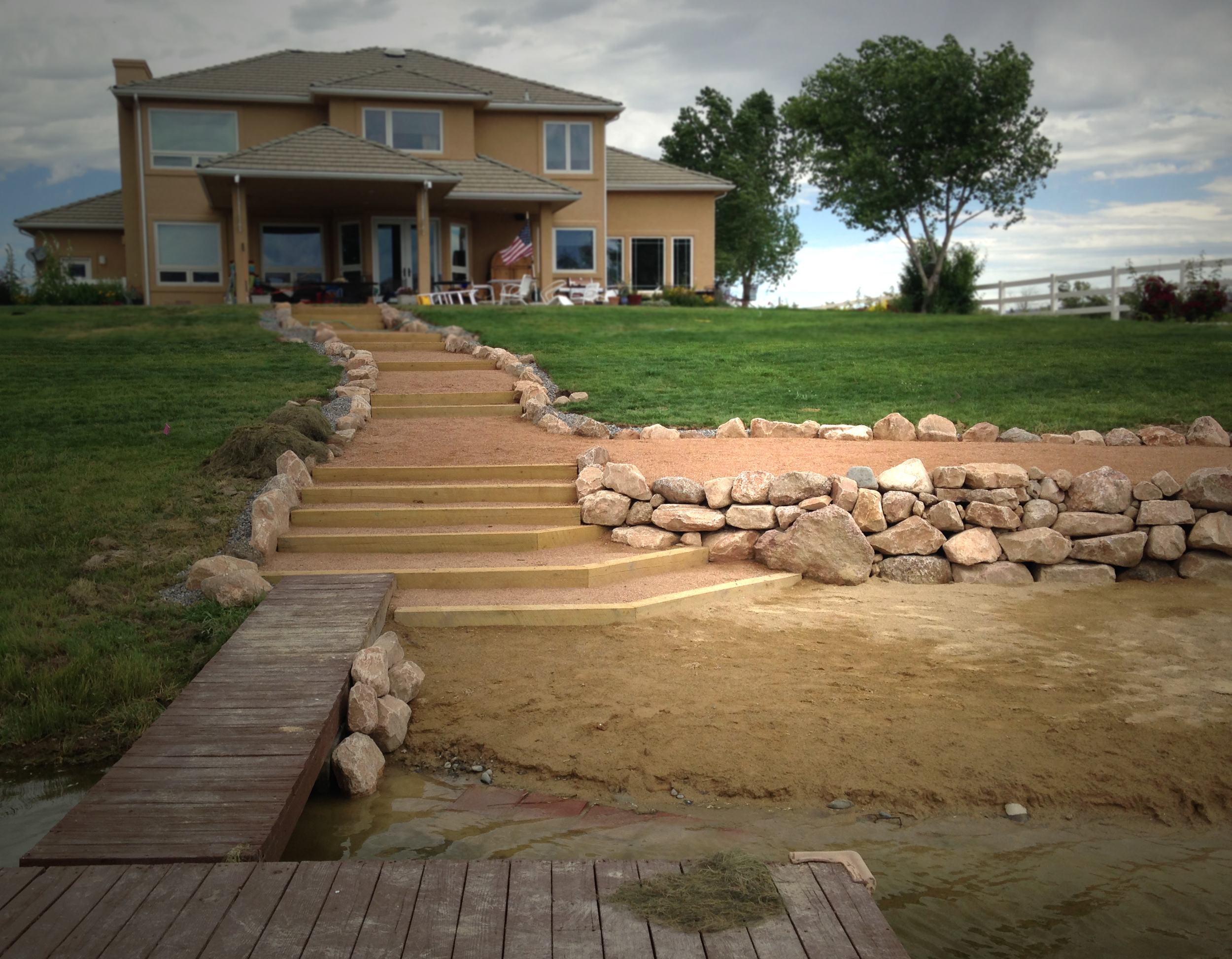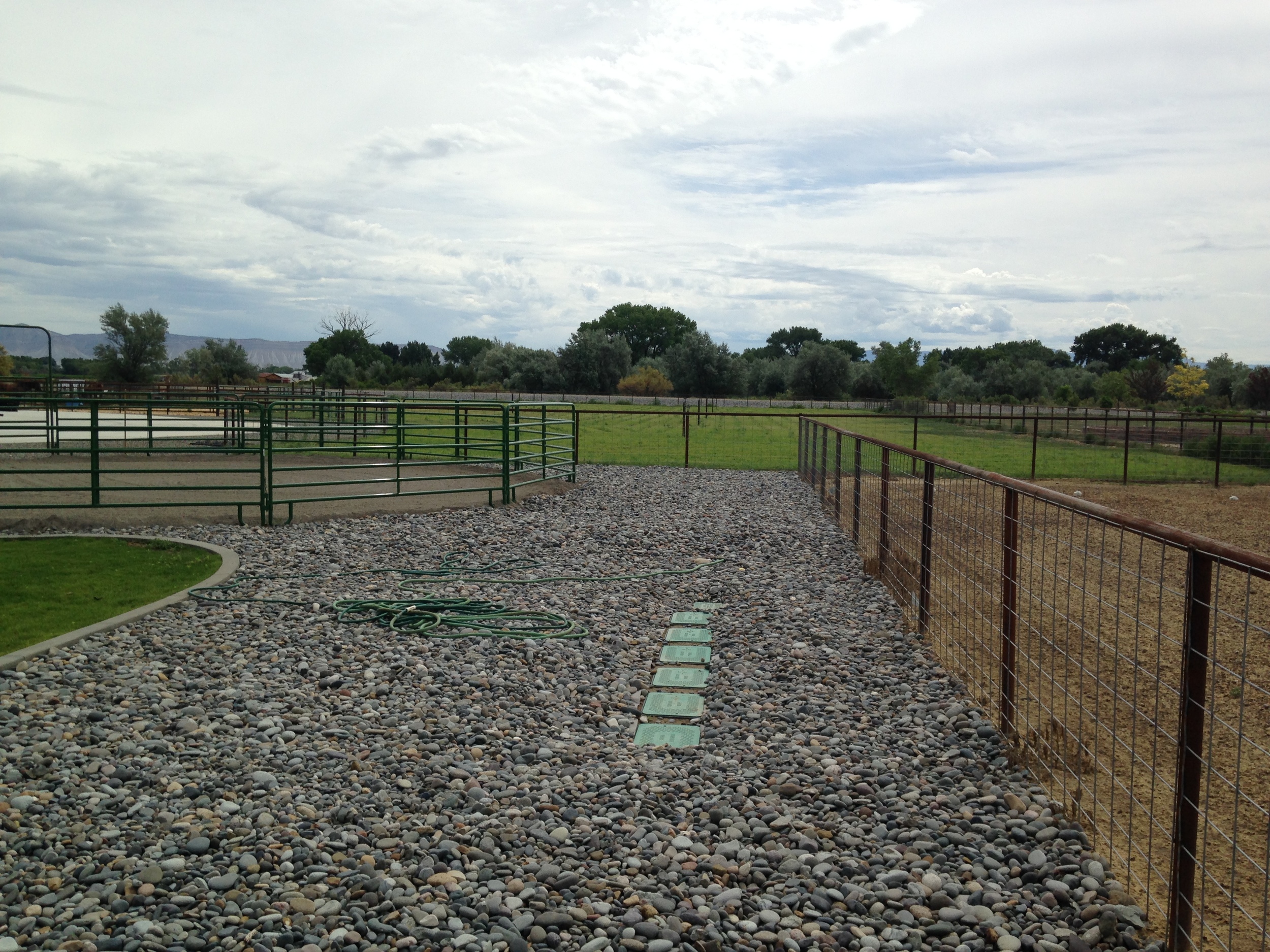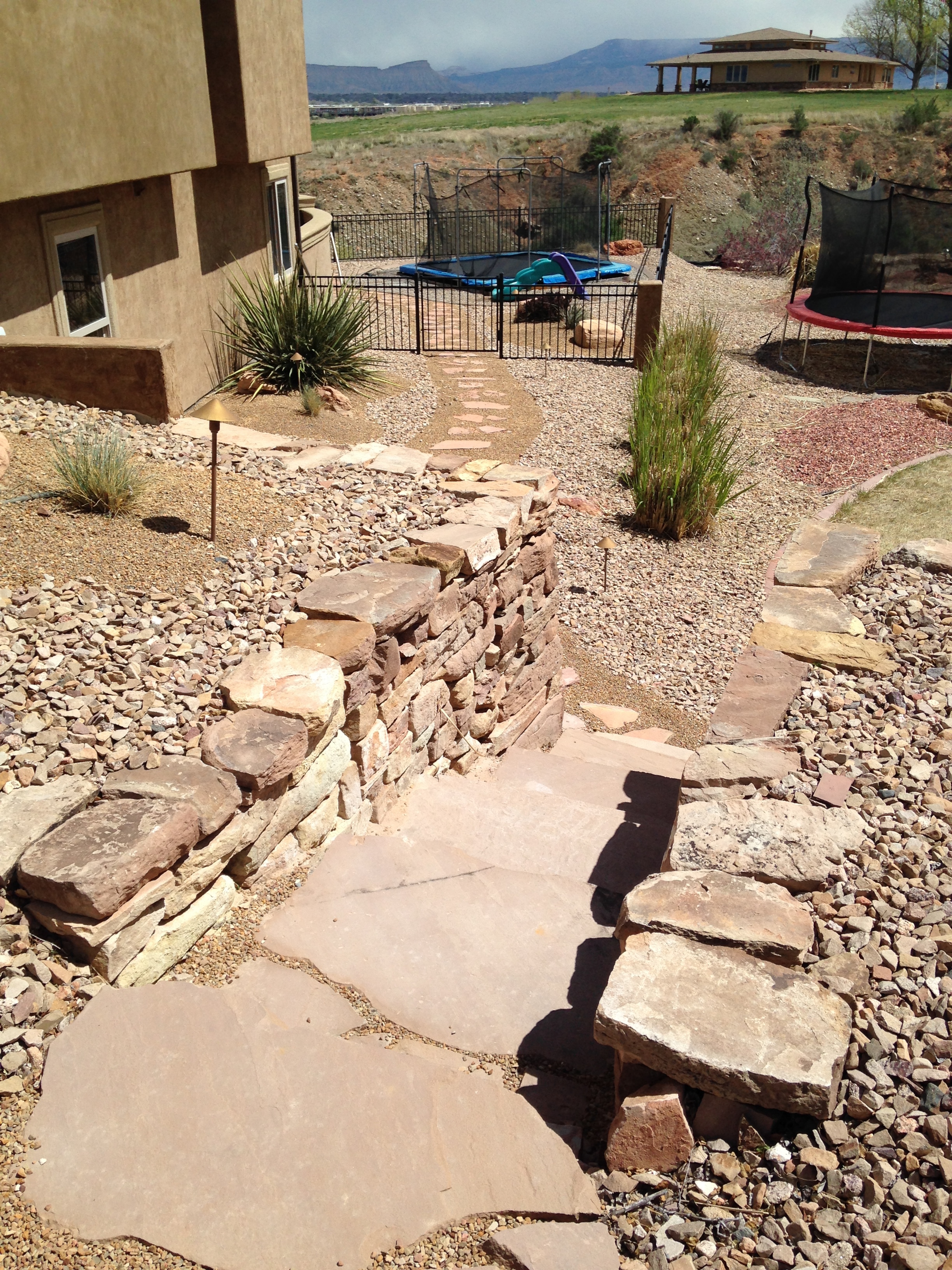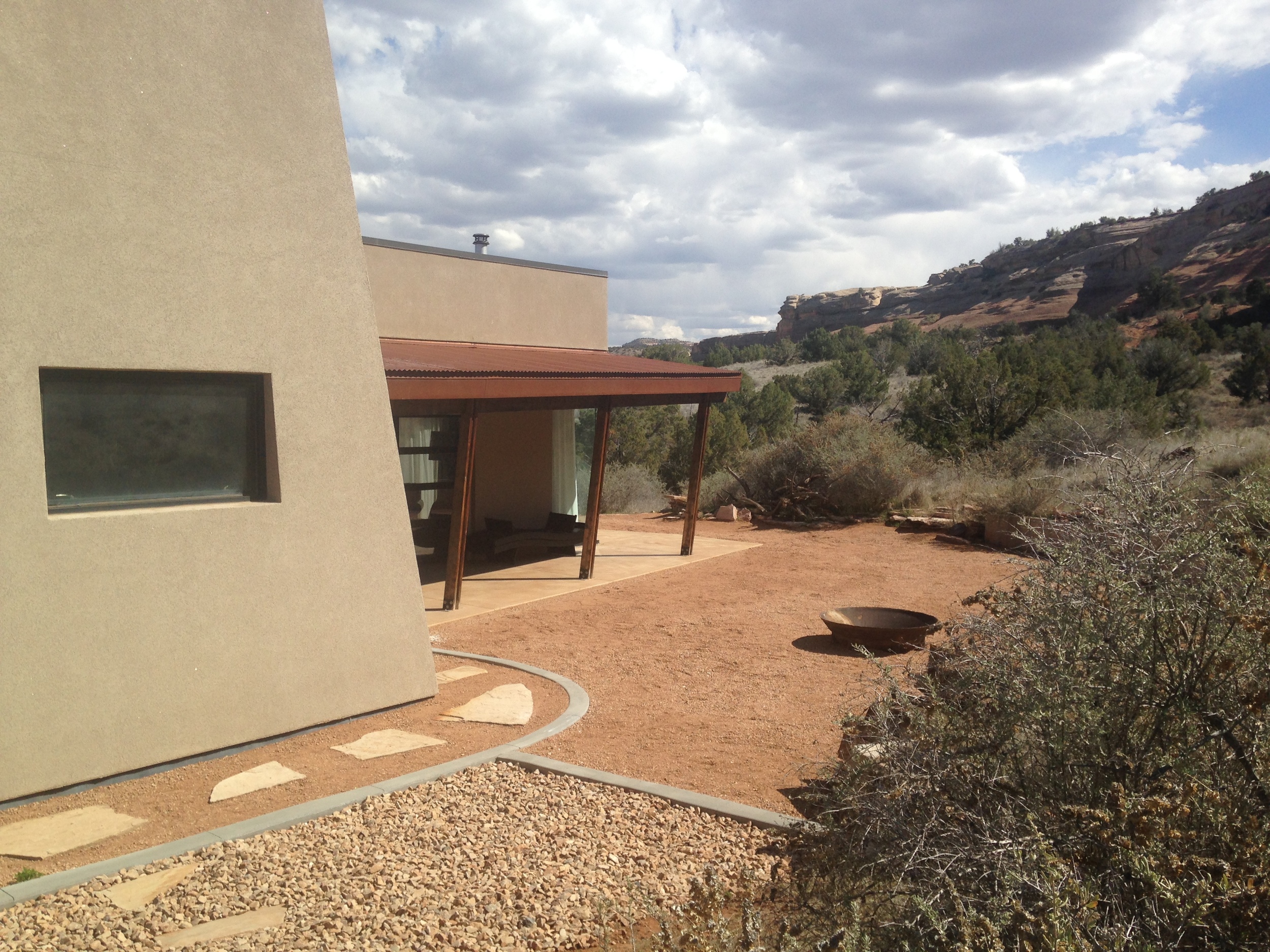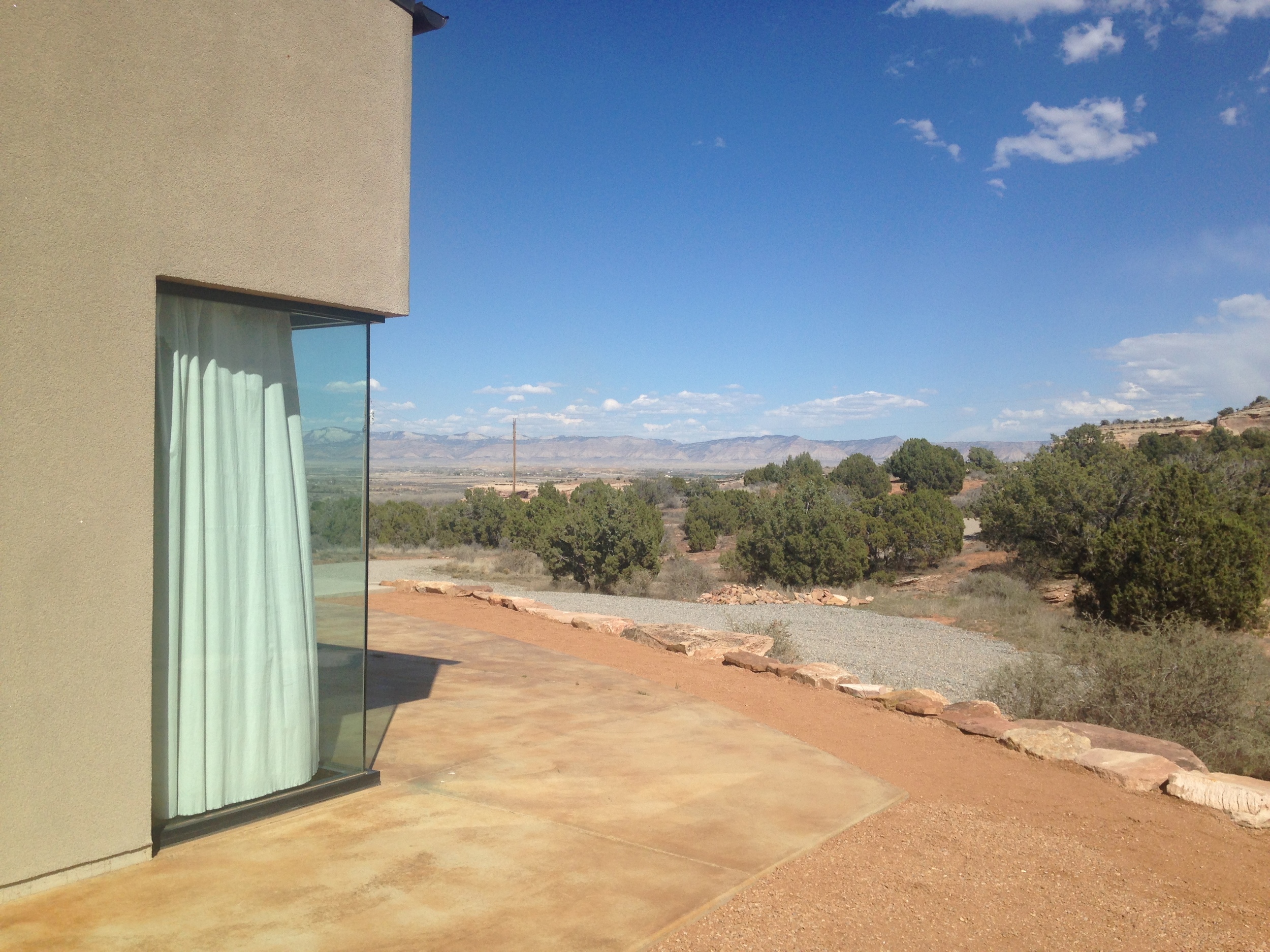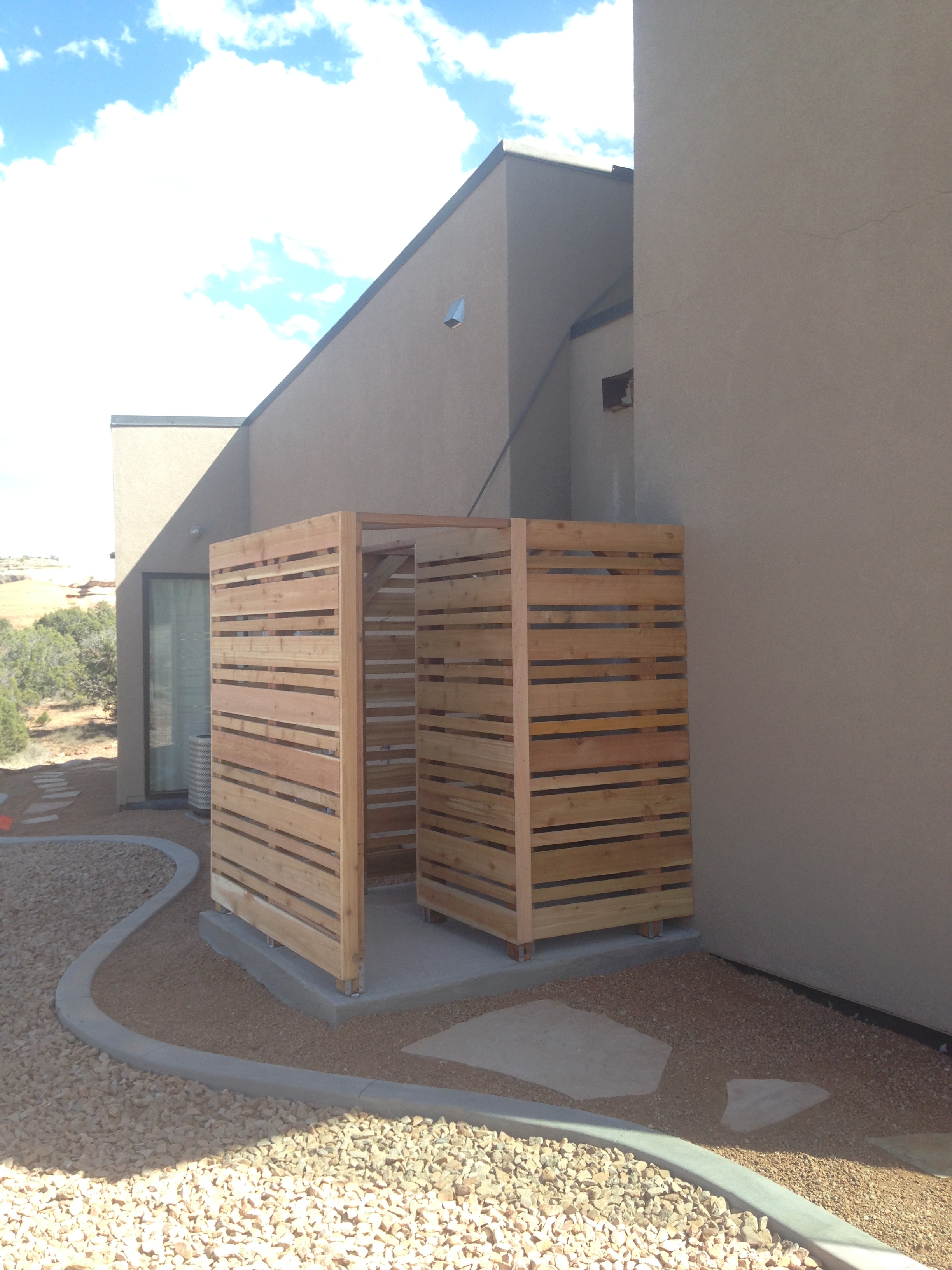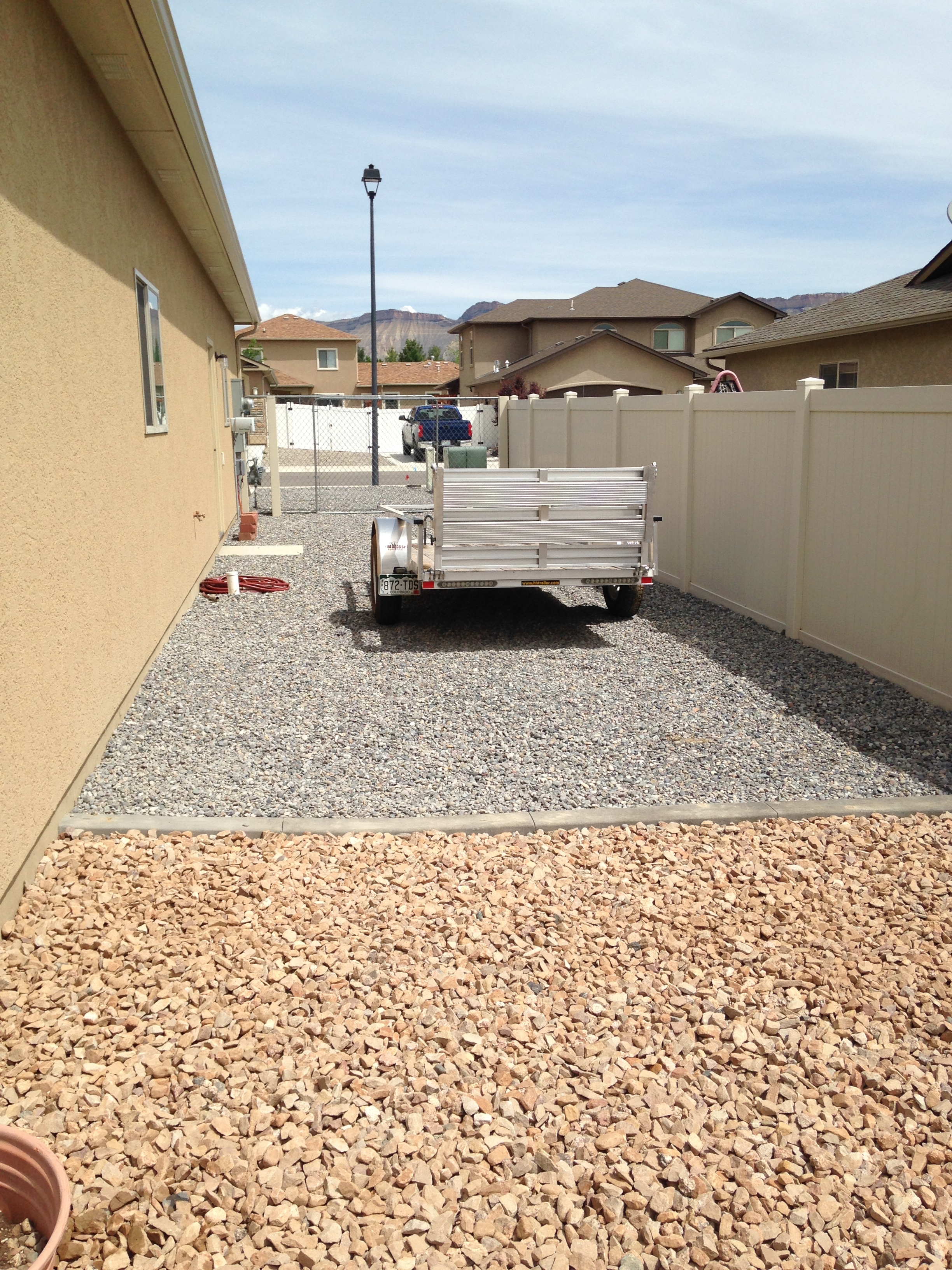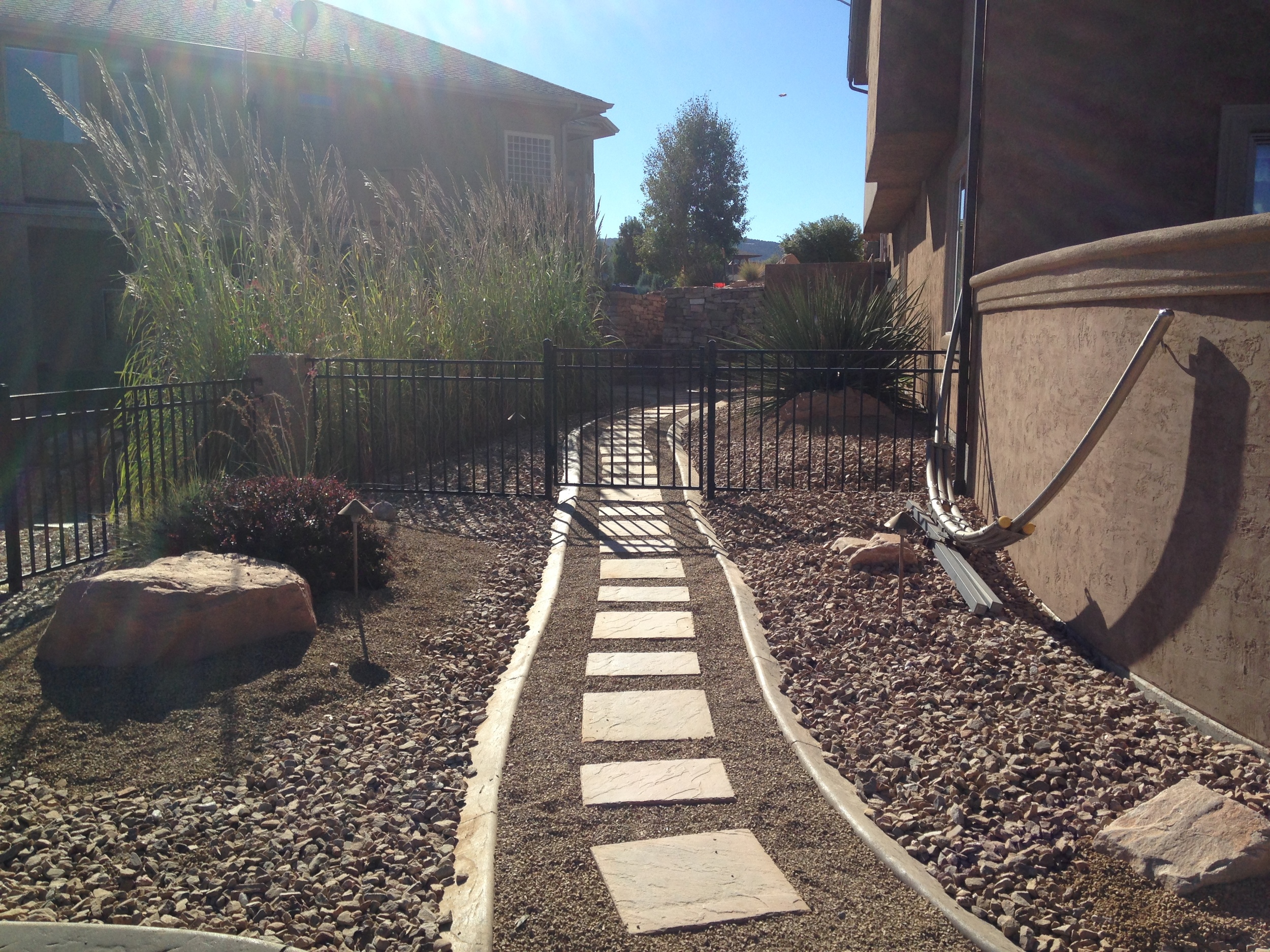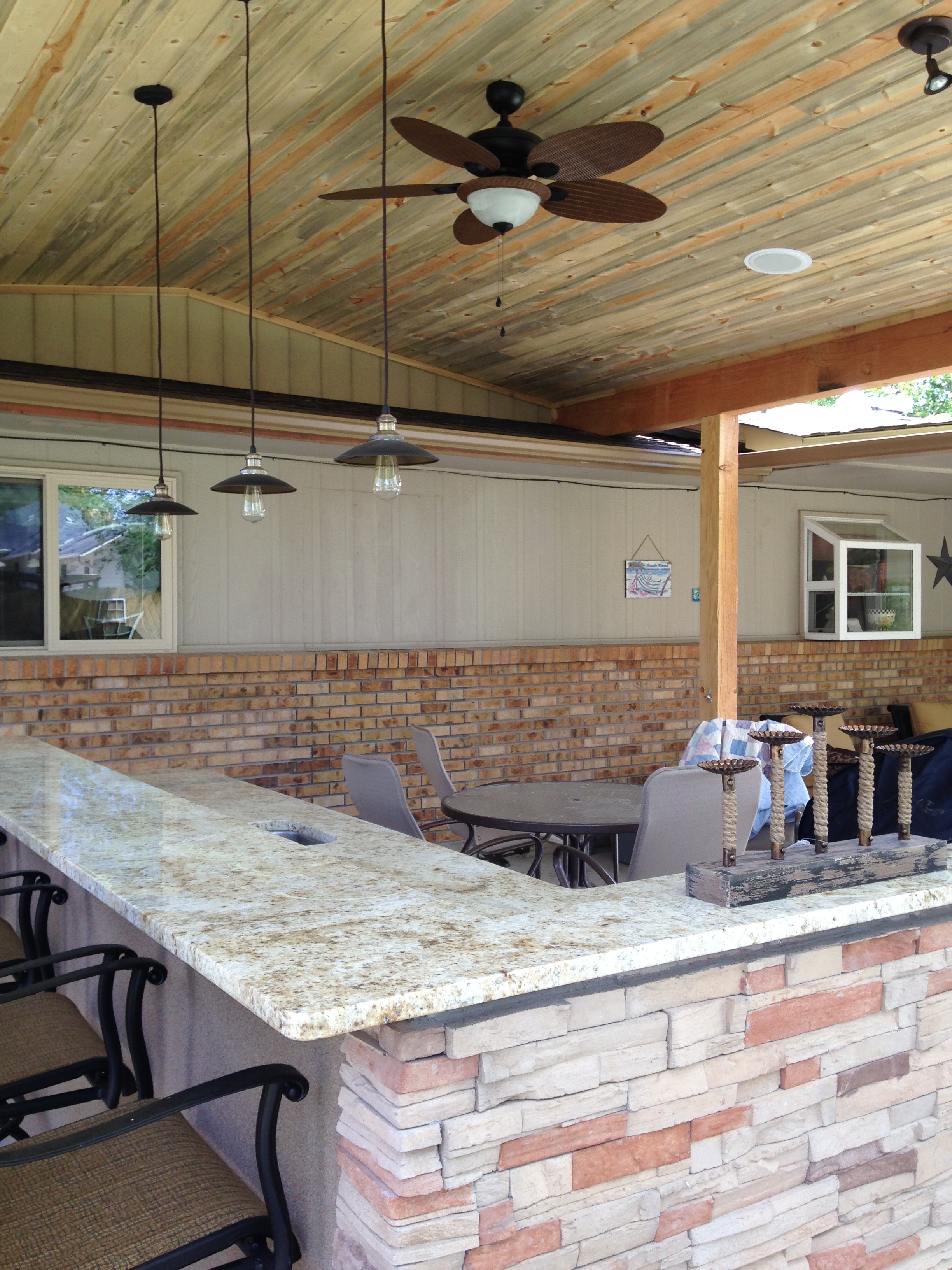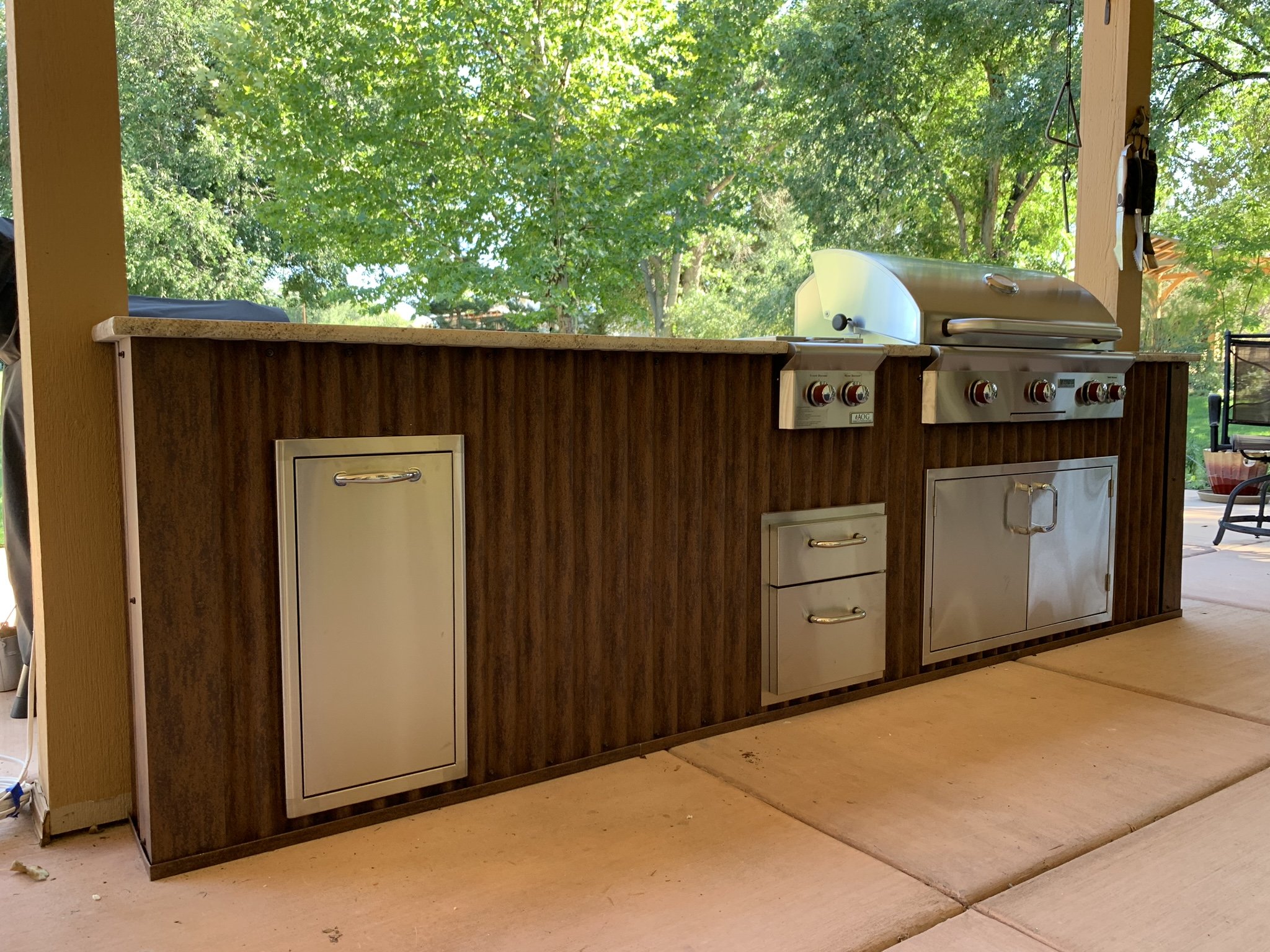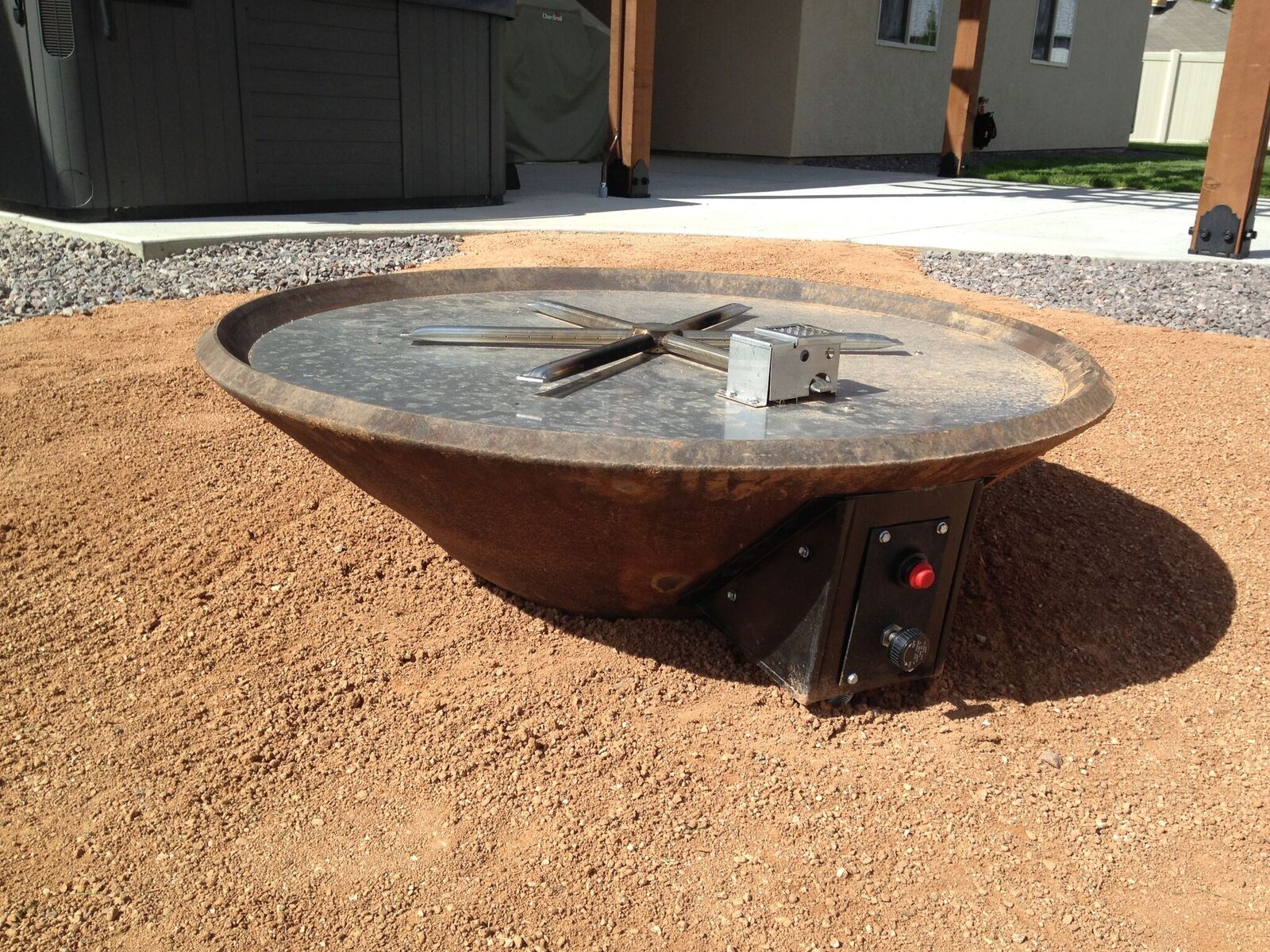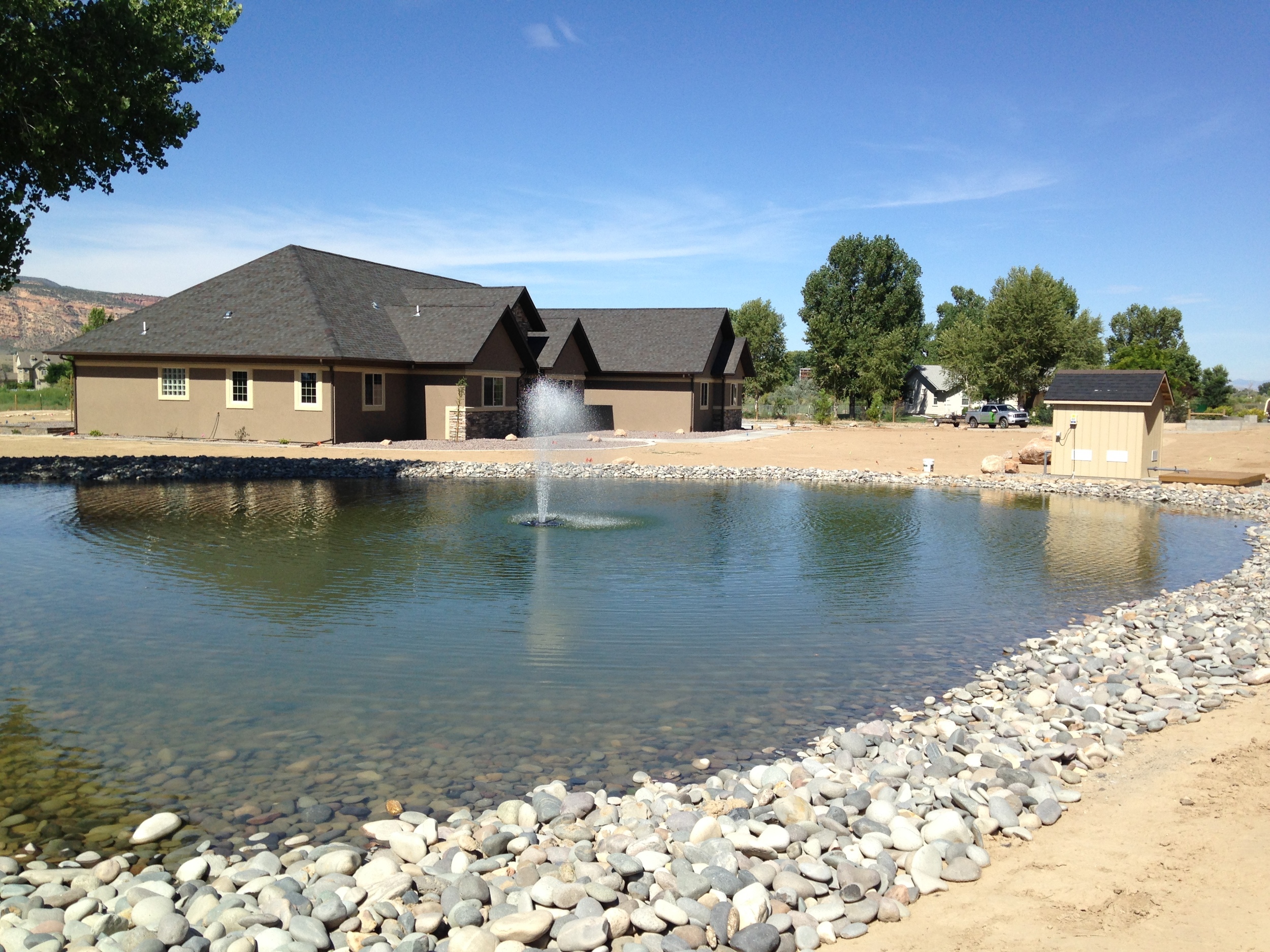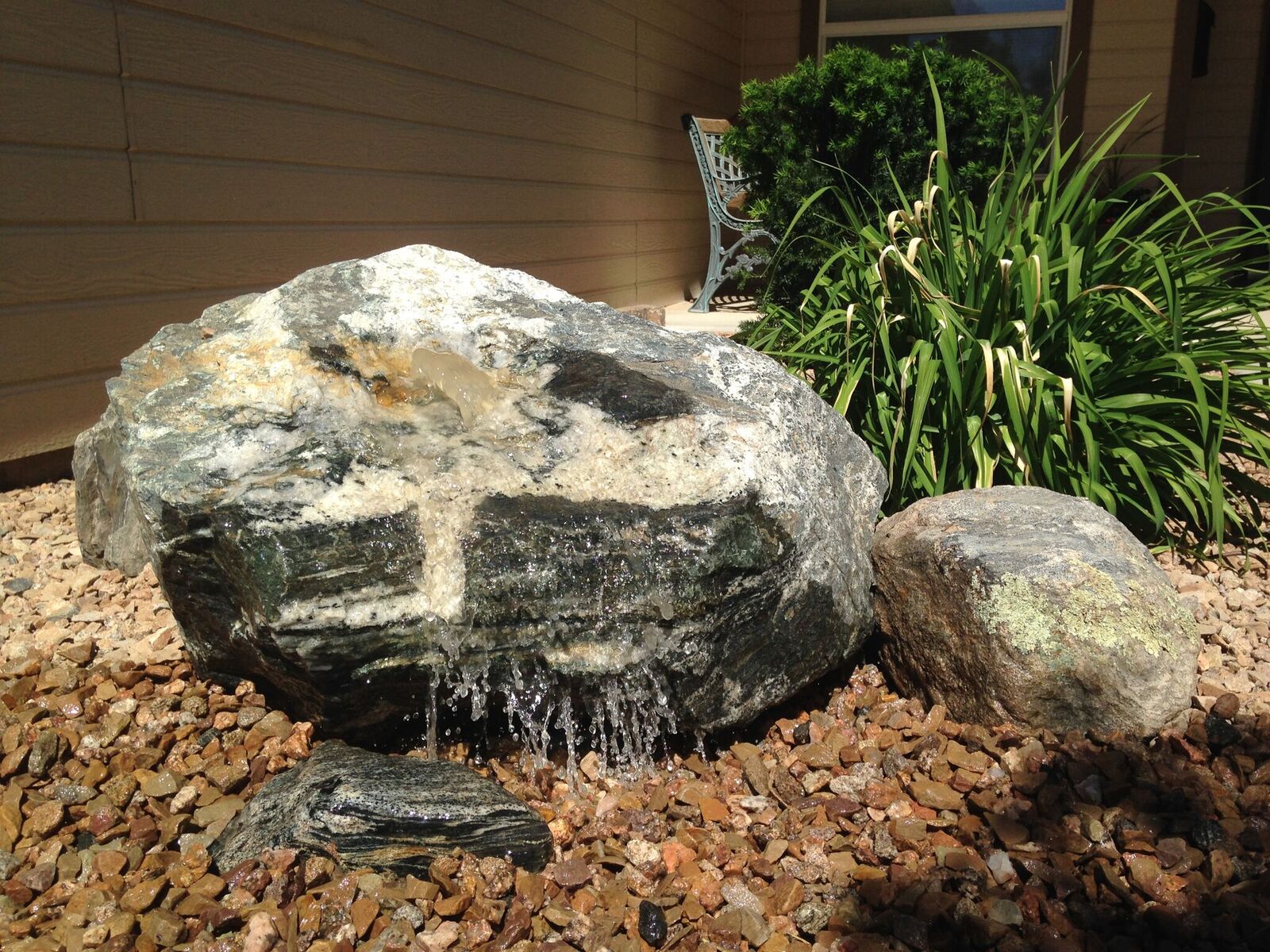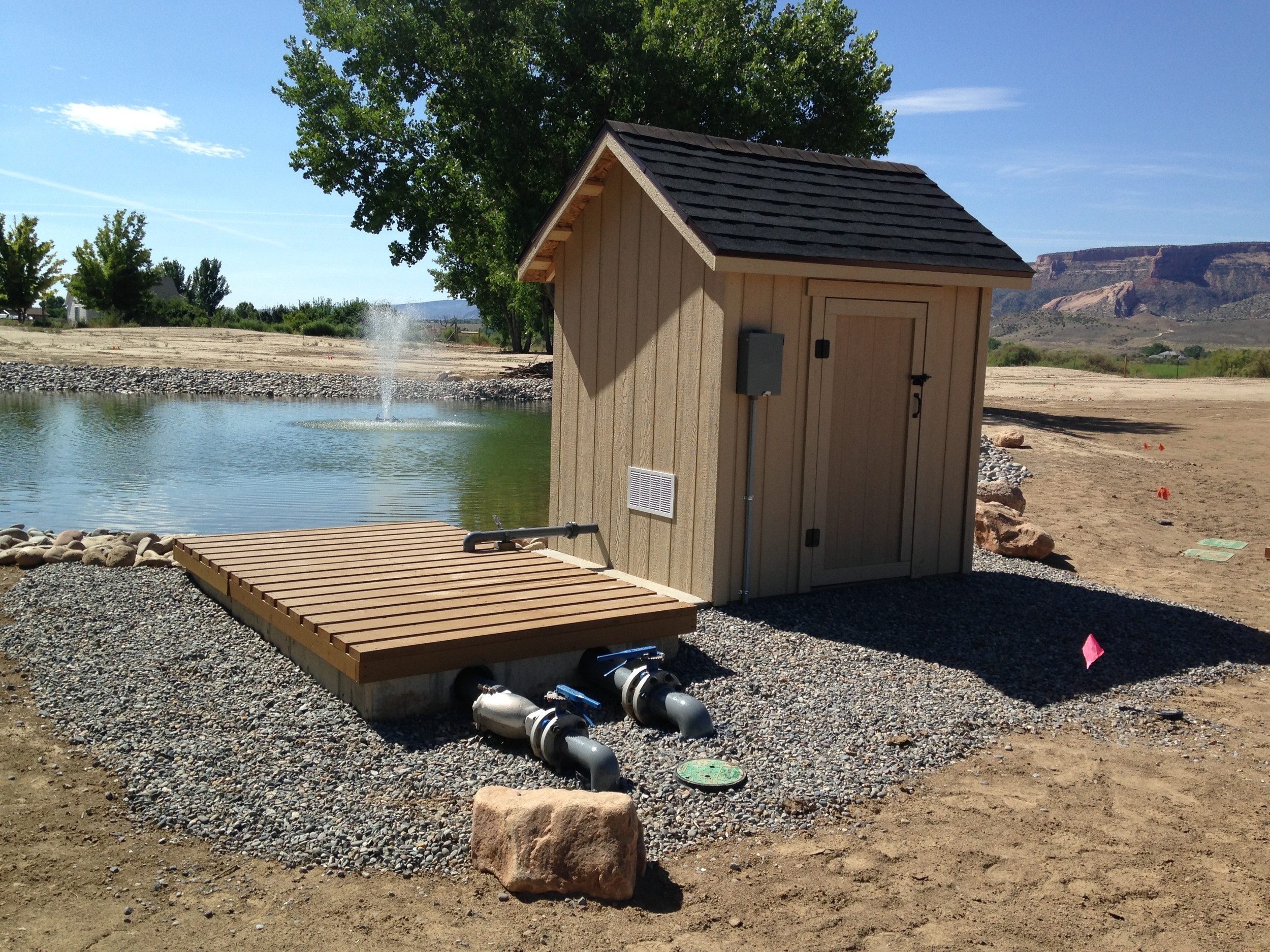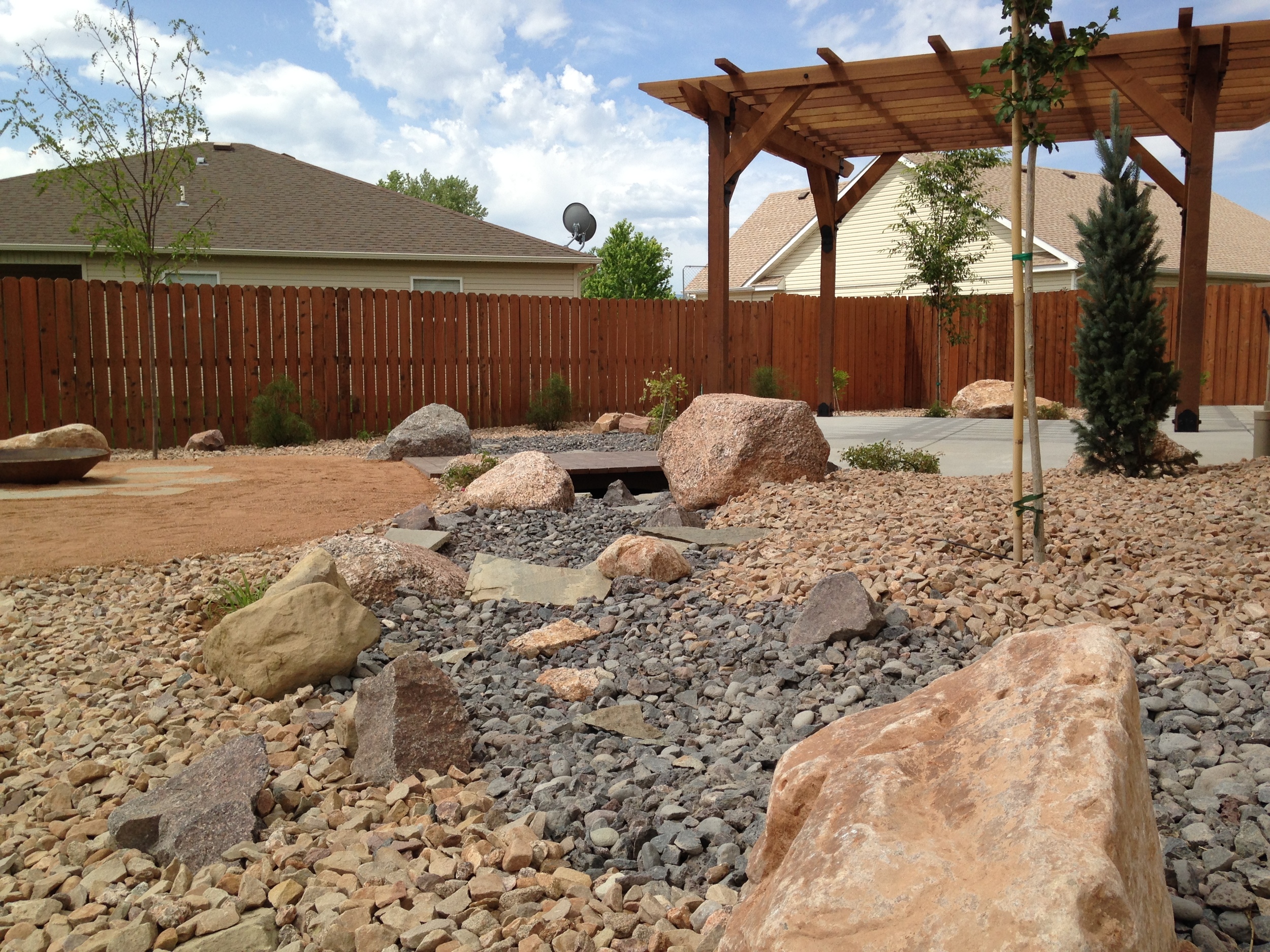Sprinkler Systems...
No yard is the same
In Western Colorado automatic sprinkler systems are very normal and common in any neighborhood. However, that doesn’t mean they’re easy to understand, operate or maintain. If you’re experiencing any issues with your sprinklers not spraying correctly, a broken line, timer frustration or more complex issues like low/high pressure, pump cavitation, sticking valves, etc., give us a call!
Fencing and Retaining Walls
Fences come in all varieties for all sorts of purposes. Dividers, pathways, terraces, holding back soil, keeping pets and kids in a yard and as steps to name a few uses. They come in wood, brick, plastic, concrete, steel mesh, corrugated, plants, trees-- you name it. The best thing about a fence to me is that it defines a yard or space, and provides a transitional barrier.
Another thing I appreciate about fencing is how it can be crafted and adapted to almost any yard. Think about an apartment with a balcony. That's the fence and the garden and green space is separate from the "real world". That's where imagination and creativity come into play.
Think about an adobe hacienda of the southwest. The harsh desert and semi-arid surroundings were kept at bay by different size walls, creating a welcoming retreat from the outside world. You can create this pretty much wherever you are, wherever you live--in any climate.
We love using our imagination to create these spaces for our clients.
Landscaping is more that just a yard, it’s a blend of art and science.
The beautification of your land can be desired for several different reasons. Regardless of the reason it requires expertise in horticulture and artistic design. Not to mention the physical skills to blend them together in harmony. Construction requires study, observation and appropriate technique. Landscaping varies according to different regions. Western Colorado provides a unique blend of challenges. It makes sense if you're new to the area to look to local experts accustomed to life here, especially if you're landscaping for the first time. Understanding of the site is one of the chief essentials for successful landscaping. Different natural features like terrain, soil type, prevailing winds, depth of the frost line, and the system of native flora and fauna must be taken into account. Sometimes the land is not fit for landscaping and must be reshaped first. Sometimes the grading process may involve removal of excessive waste, soil and rocks, as well as drainage concerns--all of these things must be taken into consideration while in the planning stage. Landscaping should be completed the right way and be aesthetically pleasing.
Do you have a vision? Do you need help seeing what’s possible? We will work with you and provide all of the tools needed to meet your expectations.
Sounds like: zeh·ri·skayp
This method of landscaping was originally developed for drought-afflicted areas. Our Grand Valley is a great place to incorporate this design type and Xeriscape continues to have an ever broadening appeal. With water now considered an expensive and limited resource all construction and landscaping projects, residential or commercial, can benefit and thrive from this method of landscape planning and development. While some consider rock and gravel Xeriscape, the truth is, they do not have a single look. The folks at Eartheasy have identified some key benefits that you can expect by applying xeric landscaping principles to your outdoor environment.
Xeriscape Benefits
Saves Water. For most of North America, over 50% of residential water used is applied to landscape and lawns. Xeriscape can reduce landscape water use by 50 – 75%.
Less maintenance. Aside from occasional pruning and weeding, maintenance is minimal. Watering requirements are low, and can be met with simple irrigation systems.
No fertilizers or pesticides. Using plants native to your area will eliminate the need for chemical supplements. Sufficient nutrients are provided by healthy organic soil.
Improves property value. A good Xeriscape can raise property values which more than offset the cost of installation. Protect your landscaping investment by drought-proofing it.
Pollution free. Fossil fuel consumption from gas mowers is minimized or eliminated with minimal turf areas. Small turf areas can be maintained with a reel mower.
Provides wildlife habitat. Use of native plants, shrubs, and trees offer a familiar and varied habitat for local wildlife.
Outdoor Living
If you’re the entertainer of your friends and family, or perhaps enjoy spending your time outdoors quietly we know the importance of combining interests and needs. The design of your outdoor space all depends on what you’re looking for within your budget and size of space. Brad has completed many custom jobs of all shapes and sizes!
When is a water feature waterless? In the image on the right we are suggesting water with the different colored gravel. Of course, if you have a source of water in the form of moving water or a pond, you can do amazing things as well. the sound of running water can be very soothing, and ponds either very tranquil or another form of outdoor recreation.
We love working within our client's environment, whether wet or dry features are desired.
Mixing rock, terrain, water, lighting and plant life to create a visually and physically inviting place can make the difference between a house and a "home", a place to relax, entertain, hang with the family or friends, a safe place for your kids to play and dogs and cats to sleep and eat.


